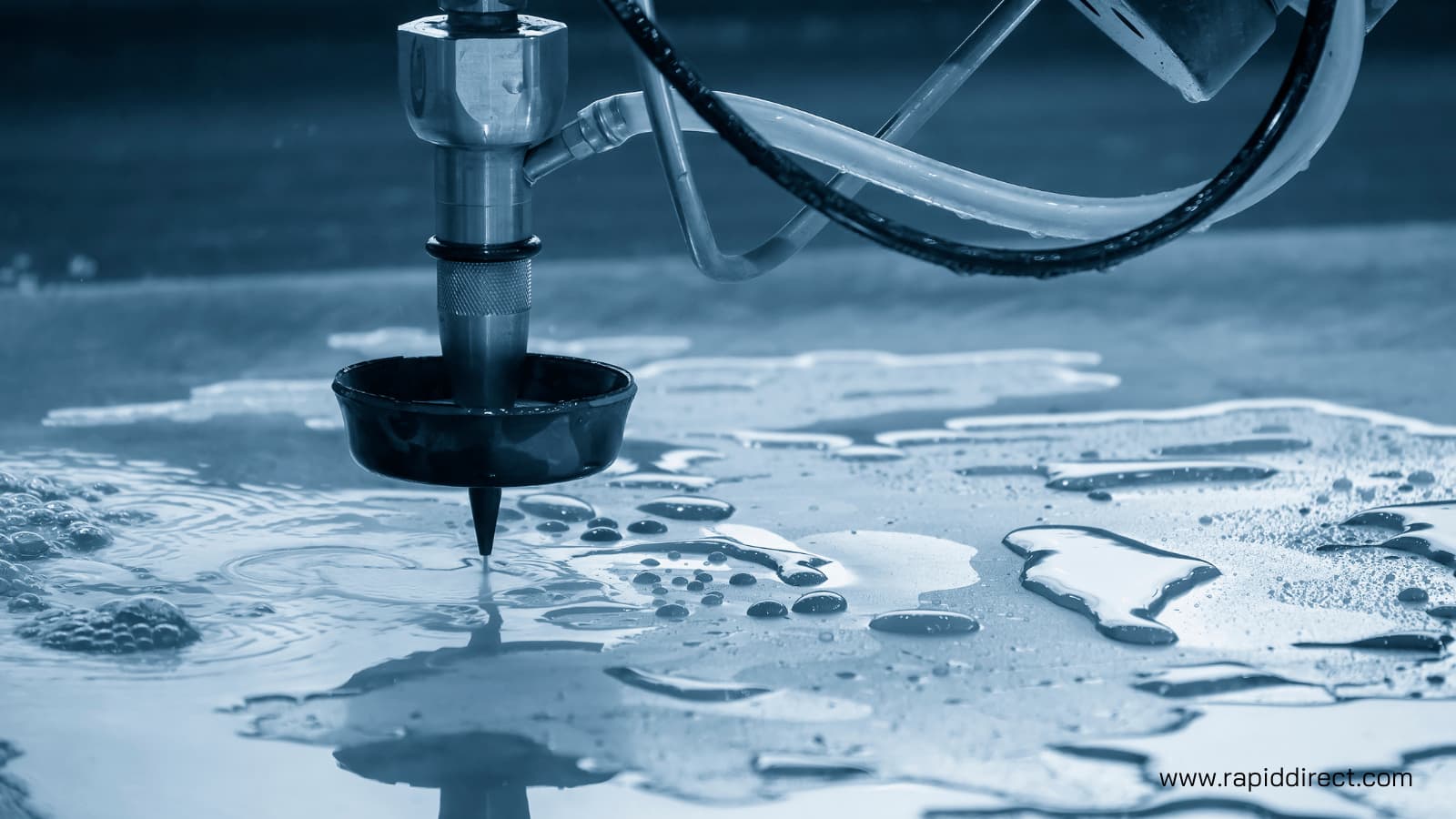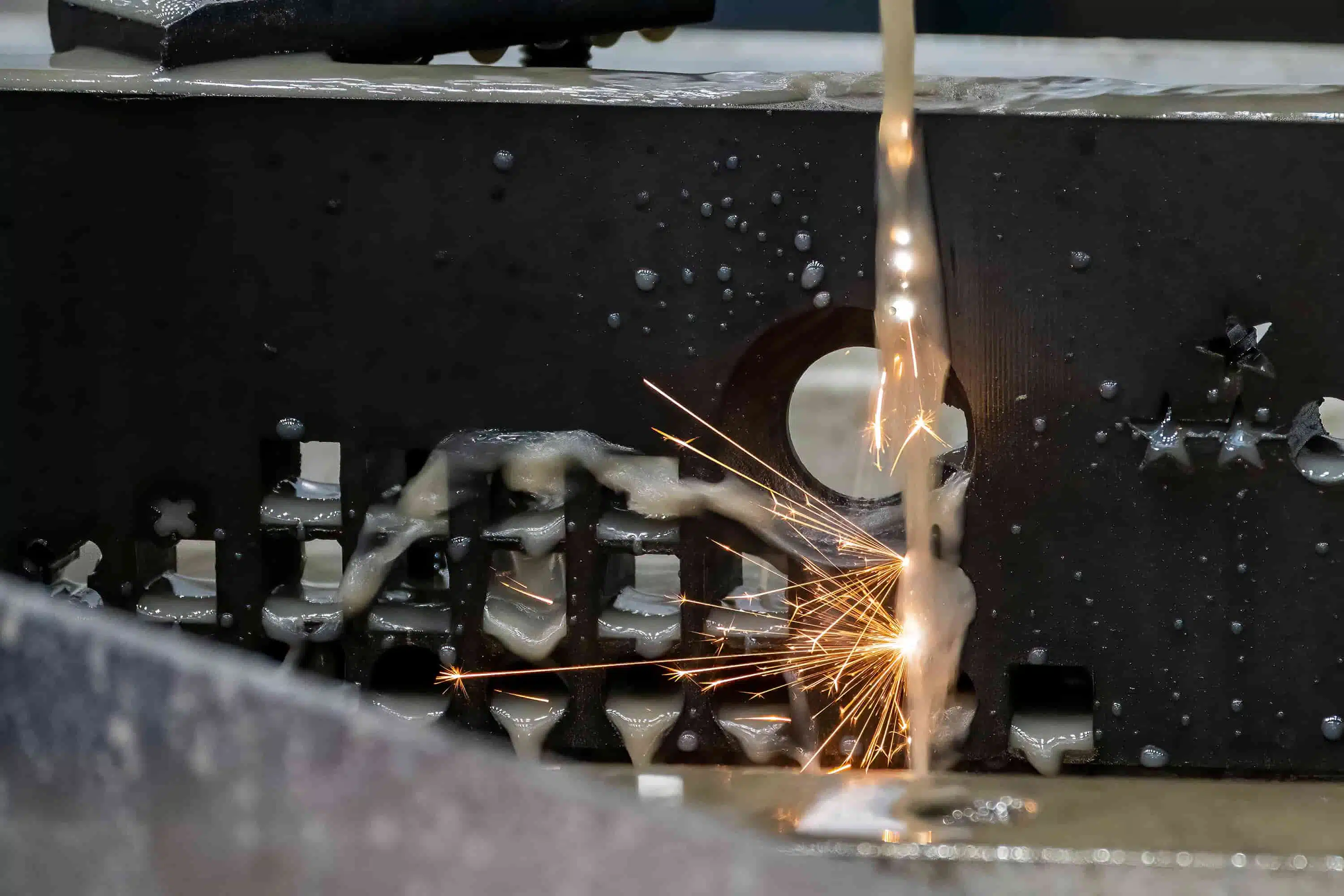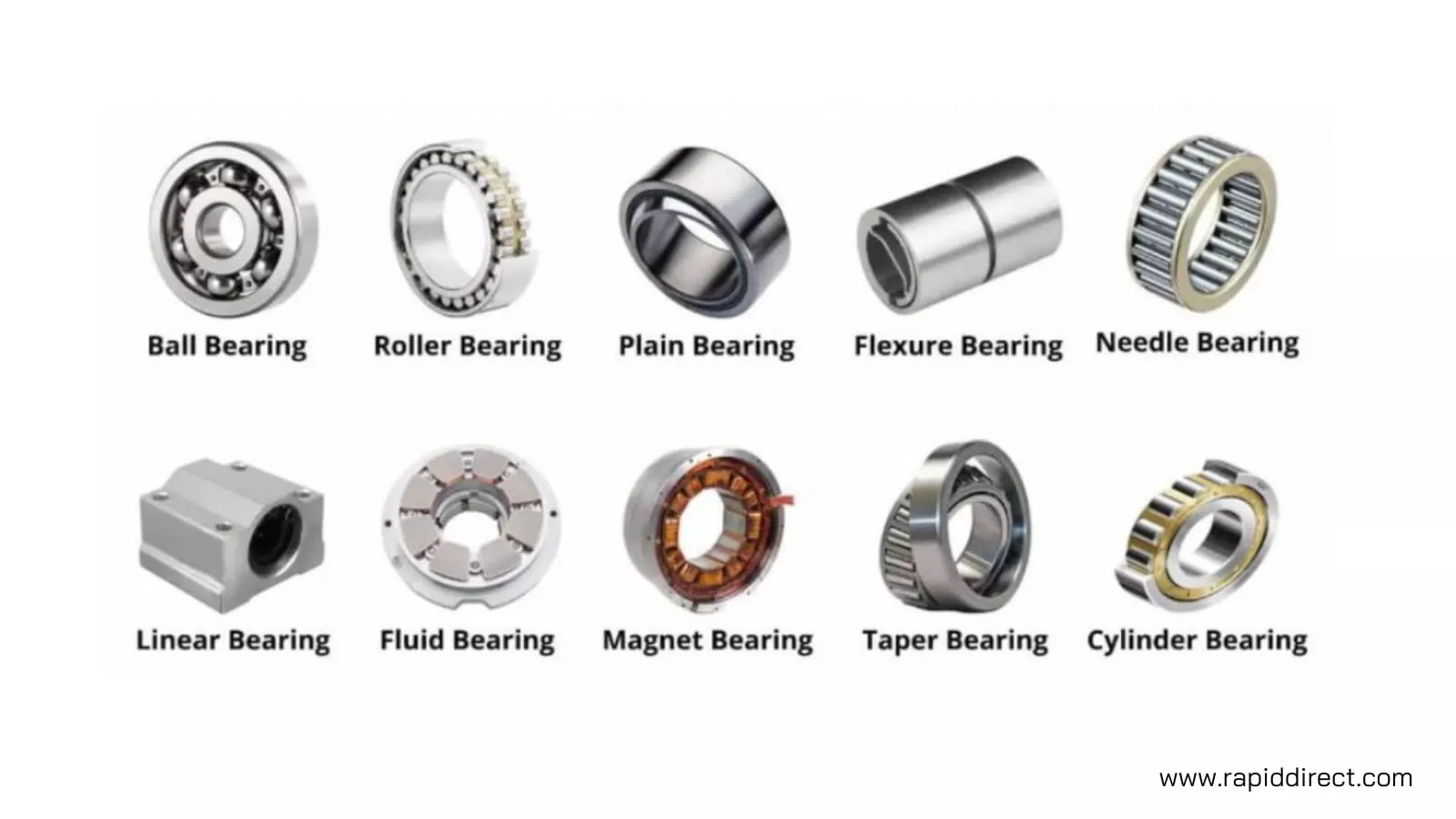Part production requires careful consideration and planning regarding both the material and process selection. Injection molding vs extrusion is a popular debate because both processes can create repeatable plastic parts at a competitive speed. However, they have some differences as well.
The following text will take a brief look at the main differences between the two processes and discuss which one is the better alternative for part production.
The Main Differences Between Extrusion and Injection Molding
Both extrusion and injection molding are common plastic parts production processes. However, there are significant differences between the two methods pertaining to the process fundamentals, compatibility, strength, and precision. All these factors combine to affect the overall cost and time of the process, which in turn affects the overall costs and capabilities of both methods.
Process
The basics of both processes are the same. Plastic is heated to deform and take the shape of a certain dye, but this is where the similarities between injection molding and extrusion end. The remaining processes are entirely different and require different approaches.
Extrusion, for instance, melts the plastic and pushes it through a certain shape. Resultingly the extruded product, called an extrudate, takes the form of the dye and cools down to solidify.
The injection molding process is completely different. The plastic does melt but it’s not pushed through a dye or any other shape. Instead, the liquified plastic goes inside the injection mold with cavities of the required shape. The plastic then cools down inside the mold to solidify and is finally ejected for the next cycle. The process takes place in 4 states and the picture below depicts those.
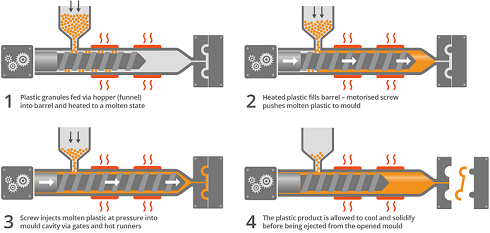
Compatible Plastics
Injection molding produces almost all thermoplastics and most thermoset plastics. This enables the production of permanent and recyclable components like nylon and acrylic. Extrusion only supports thermoplastics like PVC.
Melt Strength
The melt strength is an important parameter when it comes to plastic-related processes. By comparison, the melt strength for injection molding is lower than that of extrusion because the product is ready by the time it exists in the mold cavity.
Extrusion is different because the product doesn’t get cured and may even require some subsequent processing like thermoforming depending on the application. Therefore, the melt strength requirements for extrusion are quite high when compared to that for injection molding.
Mold Tooling
Injection molding relies on a machine consisting of a clamping and injection unit. Moreover, the tooling with the right design cavity is another requirement of the process. On the other hand, extrusion only requires a non-rubber extruder.
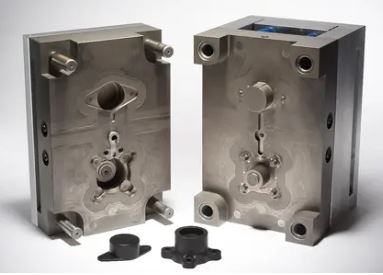
Precision
When it comes to precision, injection molding performs a lot better than extrusion. Injection molding is much more suitable for the design complexities of 3D objects. However, that capability to handle design complexities requires significant mold preparation time. Extrusion, on the other hand, is not as precise but delivers quick results.
Product Manufacturing
Just like the difference in precision, injection molding and extrusion deliver different results. Injection molding is generally more suitable for complex 3D shapes because of the process requirements. The mold for the process can be machining or 3D printing which results in more versatility. However, extrusion is limited when it comes to the products. It’s mostly restricted to 2D shapes, which handle really well and delivers consistent results.
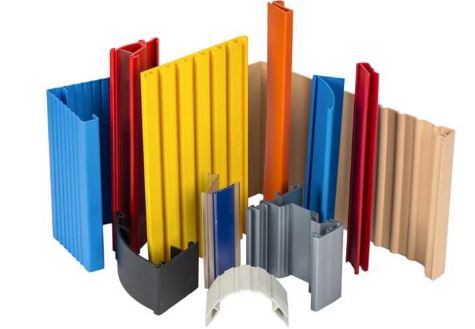
Costs
There is a significant difference between injection molding and extrusion when it comes to cost. Injection molding is generally more expensive and most of it is because of the mold costs. The mold needs to be either machined or 3D printed depending on the design’s complexity. Furthermore, the material also plays a significant part in determining the cost of injection mold. The better the material, the longer will the mold last but that will come at a cost.
The extrusion process, on the other hand, is much simpler and handles 2D shapes without any intricacies. As a result, the operating costs of the process are lower but remain unaffected by economies of scale. Moreover, the overall setup costs for extrusion can be quite high considering the restriction on complex designs.
End-Use Application
Both injection molding and extrusion work well with plastics. However, injection molding is more suitable for complex closed 3D shapes, like vehicle interior room components. These plastic components have a complex initial dye which significantly increases the capital costs but remains operational for many cycles.
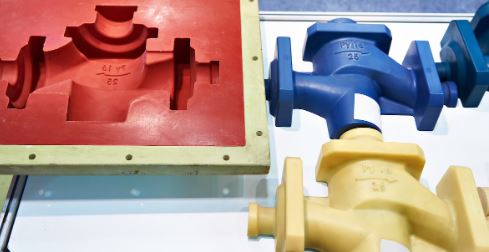
Contrarily, extrusion is an ideal choice for continuous objects or repeatable parts with the same cross-section. For instance, PVC frames, pipes, and other similar objects with continuous cross-sections will almost always rely on extrusion for production.
Overview of Injection Molding
Injection molding is a process that converts plastic resin to complex plastic products using heat, pressure, an injector, and a mold. At the right temperature and pressure, a good flowing melt will take up the shape of any well-built mold to produce high-quality finished plastic components.
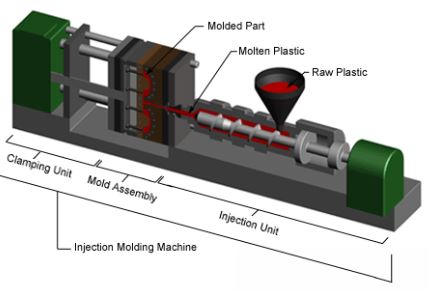
Advantages
Injection molding is a higher quality product manufacturing process than CNC or 3D printing that can maintain intricate precision and eliminate the need for post-processes. Furthermore, it’s highly repeatable and gets affected by economies of scale. Thereby making it an effective choice for industrial production.
There are numerous other advantages of the injection molding process. Some of the most important ones are:
Excellent Precision
One of the key advantages of injection molding is the repeatability and precision it offers. The average tolerance of injection molds is around +/- 0.005 inches but it’s possible to further reduce it and enhance the overall precision of the part.
Compatibility With Various Plastics
Another capability that makes injection molding excellent is its almost universal compatibility when it comes to plastics. The process is suitable for almost all kinds of plastics which makes it unique and allows greater versatility from a product development perspective.
Consistent Performance
Building on to the previous point of precision, the consistency of injection molding machines is another factor that makes this process so great. The injection molding process generally creates hundreds to thousands of the same parts and all of them will have the same geometric properties as long as the mold is correct.
Enhanced Productivity
There are two factors to this quality. Firstly, injection molding machines can handle multiple parts in the same cycle, which means better economies of scale and more efficient production. Secondly, most injection molded parts don’t need any post-processing, which means that they are ready for the market as soon as they are ejected. Thereby enhancing overall productivity by delivering ready-for-market products sooner.
Surface Texture Options
This is an optional feature, but injection molded parts can have a surface texture to enhance the functionality or aesthetic outlook depending on the particular application. A good quality mold will always help produce plastics with a smooth surface demeriting the need to reprocess the surface after demolding.
Economies of Scale
Raw material pellets are cheap. A single mold used in high repetitions, decreases the cost further. Design complexity in molds is achievable and transferred to the final plastic product. Variety in possible color palettes and surface finishes is enough to dazzle a selector, and manufacturing speed is great, bringing down mold-to-consumer time for each piece.
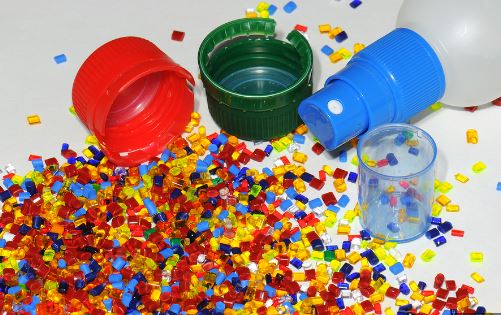
Disadvantages
While plastic injection molding has a lot of advantages, there are a few drawbacks as well. Here are a few of the main issues:
High Set-Up Costs
The injection molding process is expensive to set up as there are a lot of costs involved. The machine, the mold, and other associated costs can quickly become significant. Cost is a concern for small to medium manufacturing units.
Long Initial Lead Times
Injection molds are an integral pre-requisite of this process and preparing them requires a lot of time and resources. This adds to the overall lead times of the project and may have a negative impact on the overall performance.
Not Suitable for Low-Volume Production
Injection molding can be really cost-effective, however, that only happens when there are enough parts produced. For low-volume production, the process can be quite expensive because of the associated costs, mainly related to mold creation.
Overview of Extrusion Molding
In the simplest terms, plastic extrusion is an overall process where a liquid plastic goes through a particular cross-section and adopts its shape during the process. There are a few other requirements related to the temperature and pressure as well; because the extrusion process requires the plastic to contain its shape as it comes out of the dye. Today the industry generally uses a screw extruder. This maintains the right amount of pressure and delivers the best results in the shortest time.
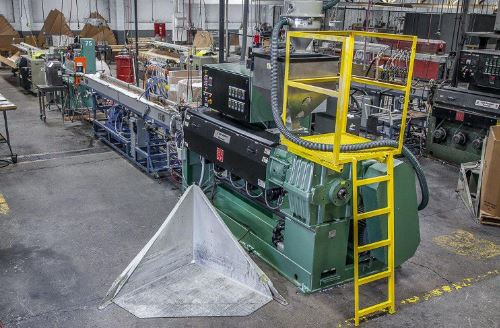
Advantages
Extrusion is among a few processes that are remarkably similar for both metal and plastics. Plastic extrusion has a plethora of advantages, and the following are a few of the main ones:
Low Cost
The best part about the plastic extrusion process is the overall effect on the costs. The process is an ideal choice for non-complex 2D parts as it delivers consistent, quick, and quality results in the shortest time.
Excellent Surface Finish
Plastic extrusion doesn’t require any post-processing. Plastic is forced through a limited opening with a lot of pressure, which doesn’t let any air bubbles or other deformities remain inside. Thus, the surface finish it delivers remains great.
High-volume Production
Extrusion is an ideal choice for high-volume production. It can churn out numerous parts of the same design continuously. This makes it ideal for high-volume production. However, it’s important to note that the process doesn’t deliver the same level of economies of scale as injection molding.
Versatility
No matter what kind of 2D design it is, extrusion molding can handle it like a charm. Furthermore, the process can handle many types of plastics with simplicity. Therefore, it is quite common across the industry.
Disadvantages
Extrusion is a great choice for basic plastic part production but has a lot of disadvantages as well. Here are some examples:
Part-size Deviations
One of the key limitations of the extrusion process is its inability to handle deviations in the cross-section or size. Any change would need a separate dye, which can potentially cause delays.
Set-up Costs
Given the limitations of extrusion relative to injection molding, the overall set-up costs are quite high. This can cause the overall costs to exceed expectations.
Environmental Costs
Both extrusion and injection molding deal with heated plastic which creates several environmental concerns. However, extruded products are not as durable, which further intensifies the environmental impact of the process.
Injection Molding vs Extrusion: The Better Choice
Extrusion vs injection molding is an essential debate for anyone in the plastic manufacturing business. However, there is unfortunately no clear winner between the two. Both processes come with their own sets of merits and demerits, but the best choice depends on the nature of the application.
The intricacies of the design, along with the capabilities of the process are only some, albeit important considerations while choosing between molding or extrusion. However, the cost required quality, and the available time is also equally important as many projects are both time-sensitive and require the perfect optimization between quality and price.
Furthermore, these two processes have very similar scientific bases and different use cases in industrial manufacturing. Injection molding’s forte is producing complicated plastic, with high finish requirements very specific three-dimensional, and low tolerance sizing. Extrusion is a lower-cost process that enables two-dimensional sizing restrictions to long continuous masses of plastics.
In conclusion, both processes can be the right choice depending on the specifics of the application. Extrusion might not be possible in some cases because of design complexities. However, that restriction doesn’t apply to injection molding services. However, in many cases where cost and time are among the primary constraints, extrusion can be a viable choice as it delivers good quality and delivers faster results.
RapidDirect: The Perfect Manufacturing Partner for All Plastic Products
Finding the right manufacturing partner can be a complicated affair. This is where RapidDirect comes in. With Rapid Direct, you get high-quality, on-demand custom parts with professional prototyping and production capabilities, online instant quotes, automated DFM analysis in seconds, and quality parts delivered in days.
For instances where the customer isn’t sure about the better process, RapidDirect’s team of experts can help out in determining the right methodology based on the specificities of the project. Moreover, we provide plastic injection and extrusion mold manufacturing, overmolding, and insert molding and deal in many classes of purpose-specific molds and a variety of plastic finishes.
Another thing that sets RapidDirect apart is the simplest process thanks to our completely online manufacturing platform. Upload the designs with other project requirements to get a quote and initiate the process. After that, we’ll analyze your designs and create a mold flow analysis. Send the mold into production and finally deliver what you need right to your doorstep. The best part is that you can be 100% sure about the quality. RapidDirect is famous for its stringent quality standards and superior results. So, choose RapidDirect and put your mind at ease concerning the manufacturing of your project.
